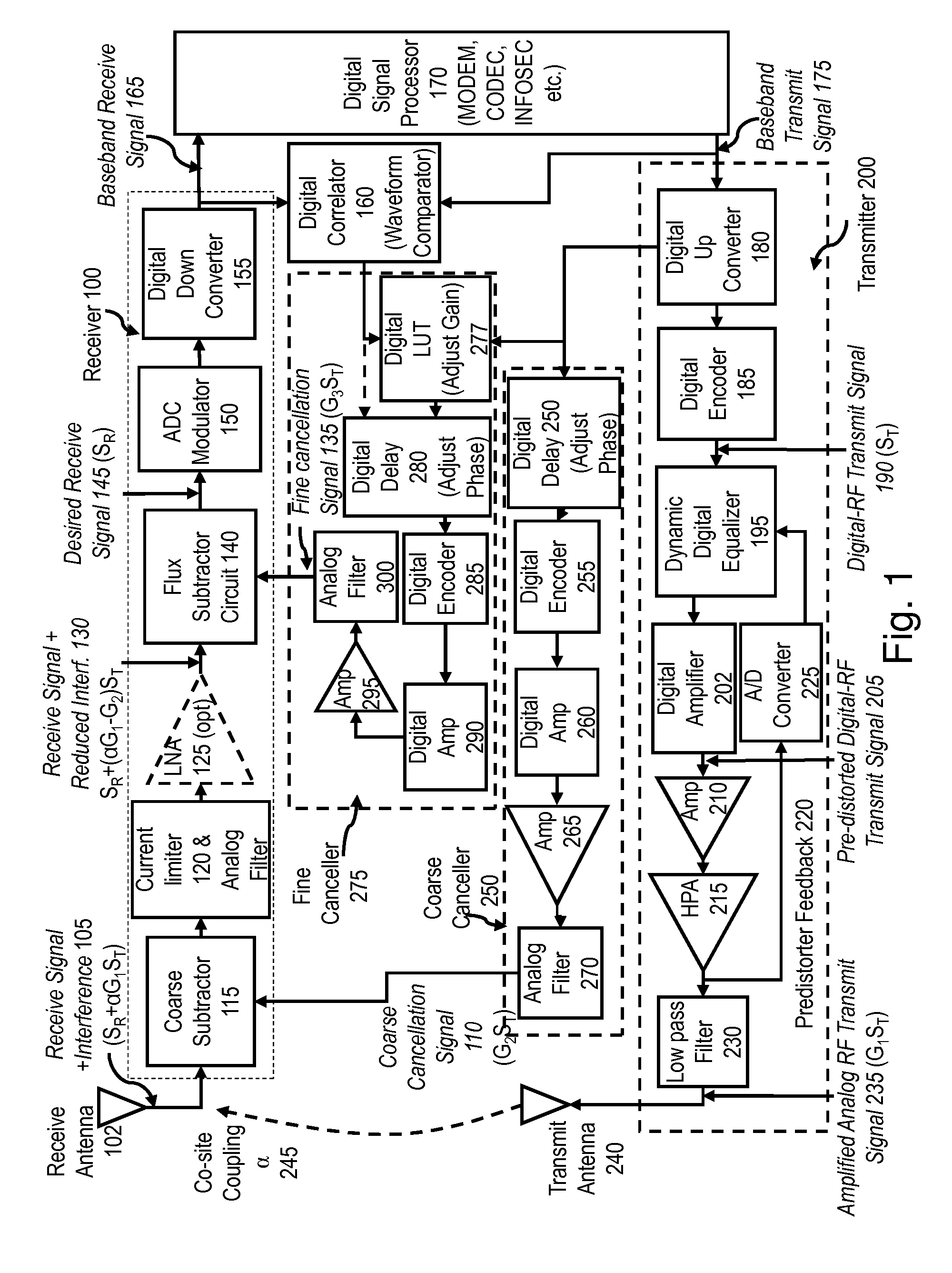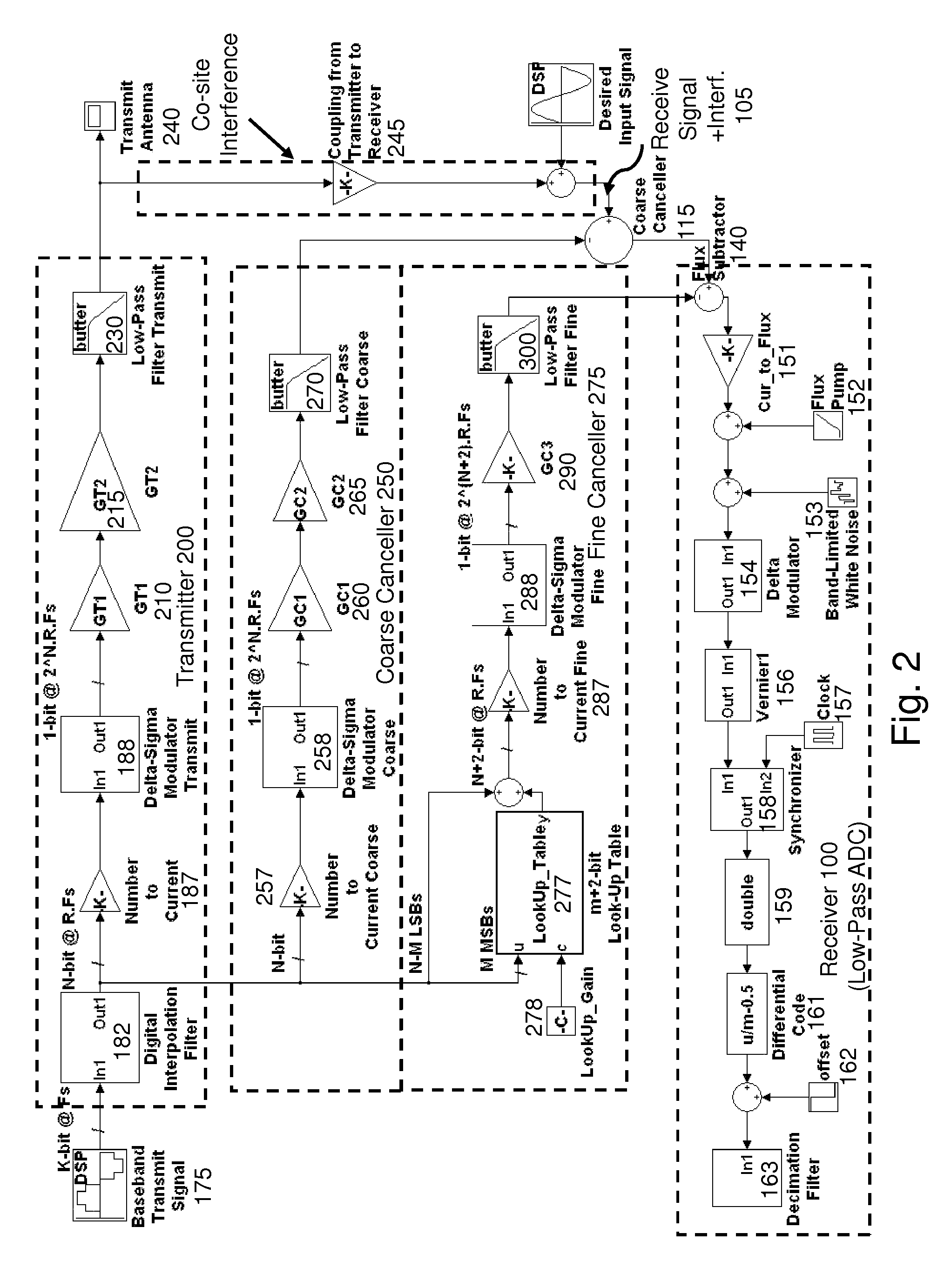Two stage radio frequency interference cancellation system and method
a radio frequency interference and cancellation system technology, applied in the field of radio receiver systems and methods, can solve the problems of unsatisfactory input distortion, limited input capacity, loss of sensitivity, etc., and achieve the effect of avoiding receiver saturation, reducing interference, and reducing interferen
- Summary
- Abstract
- Description
- Claims
- Application Information
AI Technical Summary
Benefits of technology
Problems solved by technology
Method used
Image
Examples
Embodiment Construction
[0066]Two-Stage Hybrid Temperature Hybrid Technology Cancellation Architecture
[0067]The two stage hybrid temperature hybrid technology (HTHT) architecture as shown in FIG. 1 seeks to accomplish two significant goals:
[0068]Provide a high precision cancellation with greater than 80 dB reduction of high power interference in the 0-30 MHz band.
[0069]Nulling the bulk of the interference in a coarse canceller at a high temperature stage. This facilitates employing a current limiting device to protect the quantizer from being permanently damaged by any high power currents that may result in event of unsuccessful cancellation.
[0070]One of the advantages of the two-stage cancellation architecture is the increased flexibility in tuning the gain of the cancellation signal. The increased flexibility comes from the fact that the total gain of the amplifier chain, in the coarse and fine cancellation paths, can be independently adjusted to change their respective outputs on a coarse and fine grid ...
PUM
 Login to View More
Login to View More Abstract
Description
Claims
Application Information
 Login to View More
Login to View More - R&D
- Intellectual Property
- Life Sciences
- Materials
- Tech Scout
- Unparalleled Data Quality
- Higher Quality Content
- 60% Fewer Hallucinations
Browse by: Latest US Patents, China's latest patents, Technical Efficacy Thesaurus, Application Domain, Technology Topic, Popular Technical Reports.
© 2025 PatSnap. All rights reserved.Legal|Privacy policy|Modern Slavery Act Transparency Statement|Sitemap|About US| Contact US: help@patsnap.com



